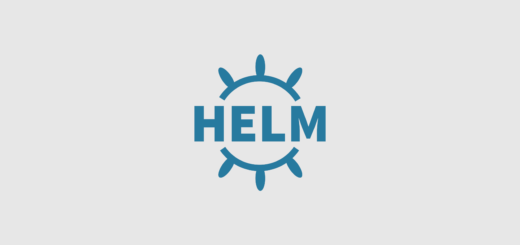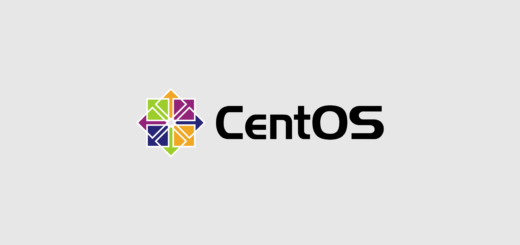Ubuntu Unity is dead, Ubuntu 18.04 will switch back to GNOME

With a shocking announcement that could be easily mistaken for an April fools, Mark Shuttleworth announced Canonical will end any form of investments in Unity 8: the phone and converge shell.
We are wrapping up an excellent quarter and an excellent year for the company, with performance in many teams and products that we can be proud of. As we head into the new fiscal year, it’s appropriate to reassess each of our initiatives. I’m writing to let you know that we will end our investment in Unity8, the phone and convergence shell. We will shift our default Ubuntu desktop back to GNOME for Ubuntu 18.04 LTS.
-Mark Shuttleworth
The bombshell was dropped about six years after Unity became the default desktop environment in Ubuntu. Unity has been one of the most controversial desktop environments ever since its inception in Ubuntu 11.04 Natty Narwhal. Many people (especially Ubuntu fans) embraced the Unity interface with joy, many others did not and even started hating Ubuntu as a result of Canonical’s decisions. At the time, the decision to ditch GNOME in favour of Unity was mostly perceived by the Linux community as a threat to the Linux desktop. To make things worse, it came the announcement of Unity 8 and the concept of Convergence. Canonical would invest its resources in creating a unified operating system for Phones, Tablets and Desktops and even go as far as producing (through partners) the Ubuntu Phones. At first Canonical was happy and announced it would support Wayland, a widely accepted at the time soon-to-be standard alternative to X. However the hate escalated quickly after Canonical’s decision to develop its own display manager/protocol: Mir.
Of success, timing and community
The whole Unity project started off with a bad foot. Users found the interface to be bloated, bugged and inconsistent. Canonical would try to improve over the years, but the hate had already been born and the Ubuntu community had already lost many of its fellow users. The moment Ubuntu ditched GNOME, Linux Mint had appeared, victorious. The problem aggravated when Ubuntu enabled the so-called “Ubuntu/Unity-spyware“: the Unity dashboard would send search data to third parties without the user’s explicit consent. Privacy, an important topic among Desktop Linux users, was at stake and the bleeding of Ubuntu users could only go worse; when Canonical decided to change route and listened to the community, it was already too late. And what to say about Ubuntu Phones? The idea was great: let’s take an Ubuntu system, put it on a phone and ship it with manufacturers. Years later its launch, Ubuntu phones never hit the sky, and failed to provide its users many functional applications provided by the other competitors. Manufacturers would lose interest in Ubuntu, and that ultimately hurt Canonical’s finances. Many community users were neglected when speaking their opinion aloud, Canonical would just keep going. For this whole time, Canonical missed the point, but when it didn’t, it missed the timing.
Ubuntu 18.04 to switch back to GNOME3
Mark Shuttleworth has cleary stated: GNOME will be the default desktop environment for Ubuntu 18.04.
We will invest in Ubuntu GNOME with the intent of delivering a fantastic all-GNOME desktop. We’re helping the Ubuntu GNOME team, not creating something different or competitive with that effort. While I am passionate about the design ideas in Unity, and hope GNOME may be more open to them now, I think we should respect the GNOME design leadership by delivering GNOME the way GNOME wants it delivered.
-Mark Shuttleworth
Shuttleworth is hoping GNOME will be more sensible to design ideas behind Unity, but Ubuntu will ultimately ship GNOME the way it’s meant to be. You can read this as “vanilla” if you’re more comfortable with the term, but we’re not sure eigher. The community is split:
- Many people now think this is a great move and appreciate the switch;
- Other people think that this was a huge waste of time, resource and efforts that ultimately led to a more fragmented Linux Desktop;
- Most of the rest think that Unity’s death is tragic.
Although there are some people who think the desktop Free Software world may enter a dark age soon, GNOME developers are welcoming back Ubuntu.
Goodbye Convergence
I did, personally, attempt to get the convergence movement going in both GNOME and KDE. In both cases, the ideas were resoundingly rejected. We hired designers initially, but the feedback from GNOME (well, Red Hat really ;)) was “who do you think you are to show up and tell us what GNOME should look like when you are not bringing code”. And that’s fair enough really, it’s their desktop. Although I would say, code got rejected pretty aggressively too ;)
-Mark Shuttleworth
Convergence is the idea that every device should converge: one operating system, different devices, different user experiences. Mark Shuttleworth first pushed this idea long ago and was probably its firmest believer. Then Microsoft gave life to Windows 8 (which didn’t really soar high), fast forward a couple of years later, Windows 10 kind of “rolled back” changes made by Windows 8, leaving only Ubuntu in the Convergence play.
Bad news for Convergence believers, Ubuntu’s founder clearly states both GNOME and KDE rejected his Convergence “movement”.
Ubuntu and Cloud, a match made in heaven
The choice, ultimately, is to invest in the areas which are contributing to the growth of the company. Those are Ubuntu itself, for desktops, servers and VMs, our cloud infrastructure products (OpenStack and Kubernetes) our cloud operations capabilities (MAAS, LXD, Juju, BootStack), and our IoT story in snaps and Ubuntu Core. All of those have communities, customers, revenue and growth, the ingredients for a great and independent company, with scale and momentum. This is the time for us to ensure, across the board, that we have the fitness and rigour for that path.
-Mark Shuttleworth
As you can read, the choice to cut Unity legs off is ultimately a shift of attention to more productive areas. Shuttleworth is explicitly referring to the Server and Cloud worlds, where Canonical is active and profitable. The Linux Desktop has always been difficult to monetize, hence the difficult choice by many dubbed as “brave“. Although OpenStack is offered by many other players (Red Hat, IBM, HPSUSE, Mirantis, Rackspace, etc.), Canonical’s mix of MAAS, Juju and LXD makes it a really interesting offering. Ubuntu has always been a major choice in IoT, and will probably continue growing since Canonical will now invest more in this area.
The two forks
In the Open Source world nothing truly dies. Just a few days after the bombshell, two new forks were born:
- Yunit.io is the first official fork backed by community users.
- UBports is another fork started by UBports, a community well-known for porting Ubuntu touch to “as many devices as possible”.
War front shifts: Flatpak vs Snap
yes, snaps continue for Ubuntu and other distributions (now Fedora, openSUSE, Debian and others). They will also integrate fully with GNOME, KDE, and I hope Elementary, MATE etc too. They are an amazingly clean way to deliver apps and since most of the major software companies target Ubuntu this is a good way to enable other distros to benefit too.
-Mark Shuttleworth
While the “Mir vs Wayland war” seems to have ended (although Mir will continue living), another war is still enraging, we’re talking about “Snapcraft vs Flatpak“: like Mir and Wayland, one is backed by Canonical, one is backed by Red Hat, however both serve the same purpose. As with Mir/Wayland, the community is divided:
- Most people think that two standards are way too many;
- Others are happy with one or the other, there’s not much difference;
- Then there are those who defend one blaming the other.
Although the Unity bombshell clearly defines a new direction for Canonical, it seems Snaps aren’t going away soon.
What about Unity 7 and Mir?
Unity7 packages will continue to be carried in the archive, I know there are quite a few people who care enough about it to keep it up to date. I expect it will be in universe for 18.04 LTS.
-Mark Shuttleworth
Unity 7 will probably be present in Ubuntu 18.04, or at least Mark expects so.
I came to be disgusted with the hate on Mir. Really, it changed my opinion of the free software community.
-Mark Shuttleworth
we have lots of IoT projects using Mir as a compositor so that code continues to receive investment. I agree, it’s a very fast, clean and powerful graphics composition engine, and smart people love it for that.
-Mark Shuttleworth
As you can see, Mir will mostly continue living for IoT projects which are relying on it to provide fast, clean and powerful graphics.
Canonical cutting staff, might even change CEO
No part of the business had sacred cows.
-Mark Shuttleworth
This bombshell was earthshaking for the community and the Linux world (at least the Desktop one), but it has also been a clear change of plans for Canonical too. According to The Register, Canonical is axing staff, figures estimated from 30% to 60% are showing up, but Shuttleworth didn’t comment on such figures. Another rumor, according to Phoronix is that Mark Shuttleworth may be returning to CEO. Whatever the real facts are, one thing is sure: Canonical is undergoing some serious changes.
A personal opinion
I can't believe this is happening, after all the effort #convergence has been dropped by #Ubuntu and @Canonical. Dreams shattered. https://t.co/cG4uGVx8X7
— marksei (@Markseinet) April 5, 2017
I’ve always liked Unity, ever since it first came out, the concept appealed to me. Unity 7 was great after some polish, and I was happy to use it, but it felt just like any other environment out there with its pros and cons. What I really liked was Unity 8 when the first images and videos showed up; or rather, I liked the idea behind. What I didn’t like is how Canonical pursued it. Canonical slammed the door to the community, cutting off its roots to develop what they thought would be the future. I didn’t like that, but I accepted it. “They’re a company and are free to do whatever they want or deem right.” I thought. Up until now I thought Canonical was working towards the reach of that goal, and it has been like this, but like I said earlier, it quite missed the point, and when things were ready it was too late. Would Unity have had more love had it been more polished at launch? Who knows, but I think it would. I would’ve preferred Unity 8 to be based on GNOME or KDE, but according to Shuttleworth, that wasn’t possible. Now that Unity is dead, I’m kind of sad, it might have been lacking and bloated but it was the embodiment of an idea that no one else (except for Microsoft) had the courage to pursue. I haven’t been fond of Ubuntu Phones, but they were an alternative, unfinished, I expected them to take quite a bit of time to become competitive, once again Canonical missed the timing and they didn’t consult the community. Would you use a platform without your favourite/essential apps? What I really think will be missing are touch-only apps (like the ones for Android/iOS/Windows Phone), those apps would have enriched the Ubuntu Phones/Tablets user experience and would’ve made a difference. A new alternative is Samsung’s DeX which just came out of the shell a few days ago, but I would’ve liked a real Linux experience, not an Android one.
Conclusions
In the end Canonical is changing shape, I don’t necessarily think this is a bad thing, however I can’t but be worried about the future of the Linux Desktop. Canonical is showing what a real company should do: monetize; cloud, server and profitable things over desktop. It couldn’t be helped, but who’s going to pursue the desktop dream? Wasn’t Ubuntu “Linux for Human Beings“? Canonical was probably the only player interested in the field, with Canonical gone, what’s left?
What do you think? Will Canonical start to decline? Is this move a good one or a bad one? Are you happy about this transition? Let me know on Twitter or in the comments below.
Thanks to Gizmochina for the top image. Most of the quotations in this article come from the original announcement and the Google+ discussion.
- 2020 A year in review for Marksei.com - 30 December 2020
- Red Hat pulls the kill switch on CentOS - 16 December 2020
- OpenZFS 2.0 released: unified ZFS for Linux and BSD - 9 December 2020




Recent Comments